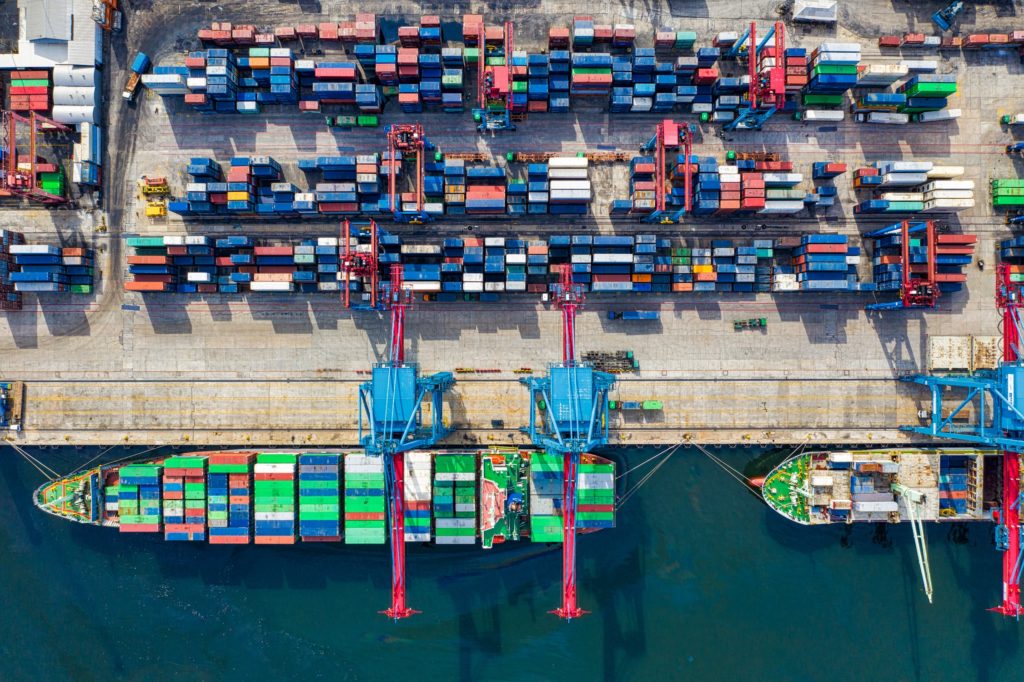If there’s one or two products you’ve been trying to get your hands on, but they’re either always out-of-stock or going for sky-high markups, know this: it’s not just you. It’s also not just some random thing you’re trying to get your hands on. The global supply chain is broken (still). From air conditioners to board games to sewing machines—many goods are scarce right now, and there’s no end in sight.
Scroll down to the bottom for tips on how to shop during the current shortages.
Shortages of many critical supplies — drugs, respirators, meat, carbon dioxide for water treatment — have been an ongoing and well-covered problem. But what we’re talking about here isn’t that. We’re talking about consumer and industrial products with lower sales volumes. These are either totally unavailable or never in-stock in the brand or variation (size, color, specs) you need.
We started noticing these weird supply issues in my house around audio and camera equipment. (We’re working on new content for The Prepared, so stay tuned!) Even used cameras are selling for near full-price, and over the summer they’ve been disappearing from online marketplaces. They haven’t been restocked.
Then, there’s the boardgames and miniatures — my new lockdown obsession. Stuff is just not back in stock. Either that, or retailers announce incoming stock that never materializes. You pay for preorders and then watch the deadlines slip by with no product to show for it.
Or clothes — I waited for months for a particular, really popular type of t-shirts I like from Wool & Prince to restock. A pair of pants I like has been out-of-stock all summer. (Look for a review of this stuff at some point — it’s all actually prepping-related.)
How the hell do you run out of scrub sponges, grocery store
— Good Tweetman (@Goodtweet_man) July 7, 2020
I started talking to the rest of our team about the shortages and delays, and found out that they’re having the same problems. One of us couldn’t find an air conditioner.
I then turned to Twitter and made a poll:
Are you still having problems finding random stuff you want, i.e. still seeing supply chain weirdness for different things?
— jonstokes.(eth|com) (@jonst0kes) July 6, 2020
Read the whole thread — so many stories of niche items that are out-of-stock everywhere. Bikes, telescopes, game consoles, organic flour, pickles, cleaning supplies, pressure treated wood, wireless networking equipment, and the list goes on. People are having a hard time finding things.
What’s actually going on
To find out what’s actually going on with the supply chain, I talked to C. Kennedy, Senior Fellow at the Security Studies Group.
The story he told me is complicated, so I’ll do my best to boil it down in plain language. But first, the key takeaways I got from the conversation:
- The shortages we’re all noticing are not going away before the pandemic is over.
- It may get worse, or it may get better. It all depends on what happens with COVID-19.
- Even if the shortages get worse, we’re not going to entirely run out of stuff. Rather, we’ll just have to wait a longer time for smaller quantities to arrive in-stock and then quickly sell out.
- There’s a reason you’re seeing shortages of more niche items, and bare shelves at smaller to midsized retailers while giants like Amazon and Walmart still have stock: size matters for getting goods across the ocean at a profitable price.
“The biggest thing to understand is that America is an import-centric logistics model,” Kennedy said. “We’re primarily built to receive cargo into our west coast and east coast hubs, and move them into the interior. With all of our production being done overseas, we’re totally reliant on international shipping to actually get goods into stores.”
When the COVID-19 outbreak first started in Wuhan, it was the initial shutdown of the factories in China that made it hard for us to get products in the US. But nowadays, much Chinese production has recovered, and the delays are all related to the domino effects that coronavirus has had on international logistics networks.
Consolidation in shipping
“When you have an enormous disruption to the manufacturing engine of the world,” Kennedy said, “it begins this enormous cascade effect. We have an extremely long supply chain that’s dependent on a relatively constrained ocean freight capacity. So when China started recovering, there was a very long recovery time [for the rest of the system].”
That ocean freight capacity is still massively constrained, and that’s what’s causing the shortages we’re seeing. These constraints are the result of a handful of long-term trends in logistics that combined to get us into our current supply chain predicament.
The most important of these trends is the massive consolidation at every level of international shipping:
- Shipping contracts have consolidated into the hands of a small number of massive shipping companies.
- These large companies have consolidated all shipping traffic in Asia into a handful of megaports.
- The cargo containers that leave these ports are consolidated onto a small number of very large, expensive-to-operate ships.
- The cargo containers themselves have gotten larger, so that it takes more individual units of cargo to fill them.
All of the above levels of consolidation reinforce each other. For instance, because the ships are so large and heavily loaded, the cranes that load and unload them must be larger and the inlets where they dock must be deeper (i.e., the boats are heavy and sit lower in the water). These requirements are driving the consolidation into the larger megaports, which are the only ones that can support these massive ships.
When these massive ships first hit the water, they introduced economies of scale that made it cheaper to ship goods. If your products could get a ride on one of these megaships, it was cheaper than sending the same products on a smaller ship.
One downside to these large ships is that they’re extremely expensive to operate. To take advantage of the economies of scale they introduce, you can’t let them out of port unless they’re full.
But what happens when disaster strikes and shuts down China’s factories, and you can’t fill these big, expensive ships? Then those ships can’t sail, and have to be taken offline so they don’t rack up expenses just sitting empty in port.
The companies that own those big ships are highly leveraged. They’re financed by loans from a handful of megabanks. When the coronavirus shut down Chinese factories and those ships quit sailing, their revenue streams stopped.
When the outbreak in China did subside, the factories came back online. But the ship’s owners haven’t yet brought all that idle shipping capacity back online for two reasons:
- They’re worried about demand from the US and Europe not recovering due to ongoing outbreaks in the US and a possible second wave in Europe. Until we’re totally out of the woods with COVID, it’s hard to make the case to spin up those expensive ships, only to see them partially filled and unprofitable.
- They want to make up the money they lost when the world economy tanked. So they’re jacking their prices way up and keeping costs low.
Kennedy said that “real market rates have gone up more than 100 percent in the trans-Pacific lane.”
“Now everybody’s bidding against everybody and driving up the cost, which is what the ocean carriers want. They’re simultaneously filling up the vessels and increasing their margin. This is their year to get right financially.”
The end result is that it’s really expensive for smaller, niche product makers to get their goods onto these big ships. They have to compete with the likes of Amazon and Walmart, who have deep pockets and can outbid them for scarce cargo space.
You’d think they could just start shipping their goods on smaller ships from other ports, but unfortunately the system doesn’t (yet) work that way. Here’s why.
Trade war movement
One consequence of the trade war that preceded coronavirus: smaller manufacturers started looking to other countries in Southeast Asia to make their products. When many brands fled China, then Vietnam, others like Malaysia and Indonesia gladly stepped up with cheap labor and local factories.
Because these smaller countries don’t have their own major international shipping companies, goods made there are first shipped from local ports to the region’s larger megaports.
Japan, South Korea, and a few other countries have such megaports that have been used to get goods to the US, but right now, the Chinese megaports are calling all the shots.
The shipping companies favor the large Chinese ports for the few ships they have in the water. Walmart, Amazon, Target, and others kept all their production in China, and they all still ship out of China, so that’s where the ship owners send their fleets.
“The [smaller] companies have moved from China to other places in Southeast Asia where they’re seeing far less [shipping] capacity available to them,” Kennedy told me.
The end result is that if a smaller retailer is making goods in, say, Indonesia, it has to get them to a Chinese port, and then get them on the same big boat out that the larger retailers are using.
No end in sight
Unfortunately, there is really no end in sight for any of the shortages we’re seeing right now. These shortages are all the result of the big, long-term structural changes described above. And not only is there no quick solution for them, but nobody in government seems to be really trying to solve the problems right now.
It’s not because this issue doesn’t matter, but because our leaders are focused (as they should be) on well-known, dangerous shortages of critical supplies like respirators, drugs, and some kinds of food.
The Biden campaign’s recent statement on supply chains, for instance, is completely focused on critical needs, and doesn’t make any mention of these smaller shortages.
So this is something that we will all be dealing with until the pandemic is thoroughly in the world’s rearview mirror.
What to do about it
Right now, you need to be getting ready for the fall. There a number of possible reasons we could see further disruption and unrest after Labor Day — the election, the combination of flu season plus coronavirus resurgence, an active hurricane season, etc. We don’t know what’s next, but the odds are high enough that one or more big problems could erupt that it’s worth getting your preps in order.
What this looks like, at least in my house, is something like the following:
- Figure out what you need and what you want. (Wants are important! Especially with all that’s going on.)
- Make a budget for those needs and wants.
- Prioritize your needs, but also throw in a want up near the top of the list for sanity reasons. (I use Kit Builder for this.)
- Pick up items as they become available. Don’t panic and overpay on eBay! Just keep checking regularly, and when something shows up in-stock be prepared to snap it up.
- Use the interest-free pay-over-time option, instead of putting it on your credit card.
- Avoid the USPS. They are underpaid and overworked, and this translates into damaged shipments. I’m seeing this, and so are others anecdotally.
- Plan on order fulfillment delays, sometimes of weeks, and be pleasantly surprised when things show up on time.
- Do your back-to-school shopping right now. If you wait until everyone else is doing it, you’re going to face shortages of supplies.


You are reporting the comment """ by on